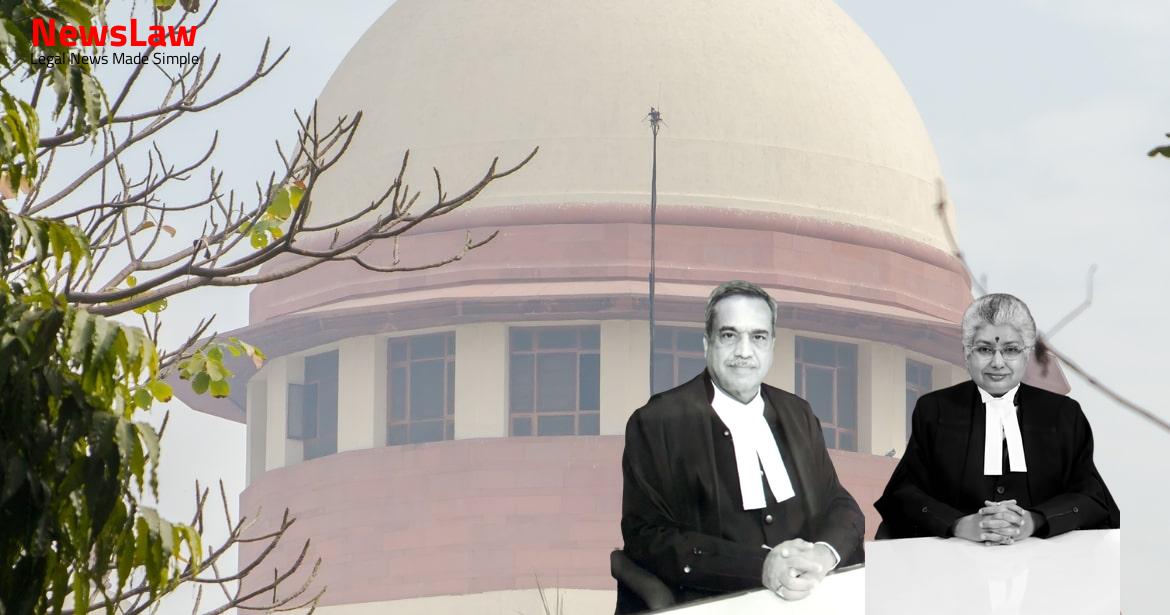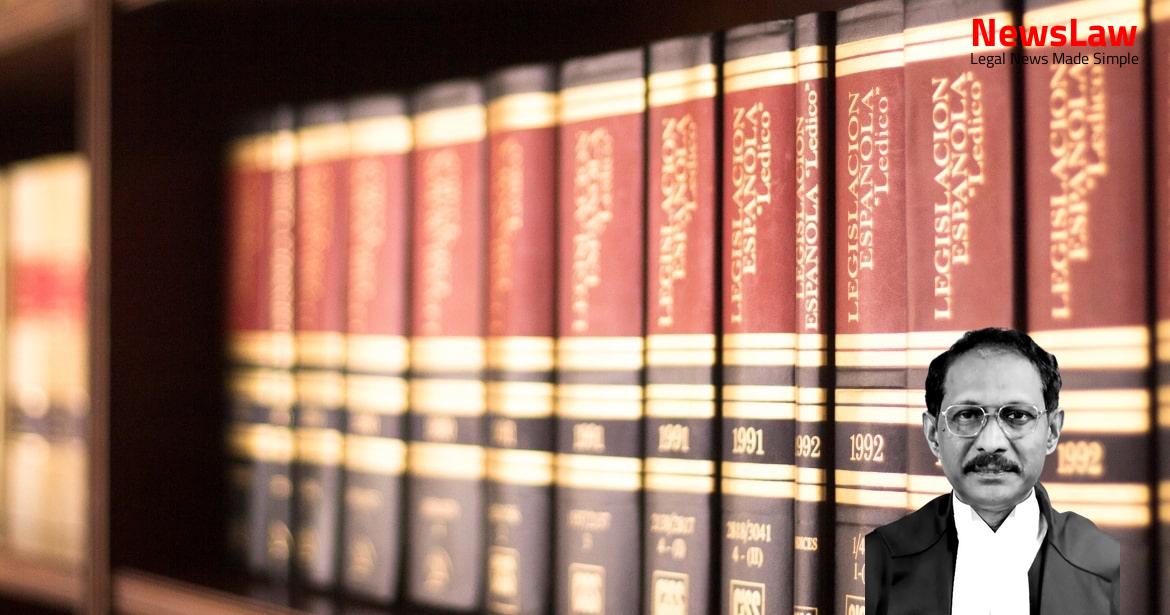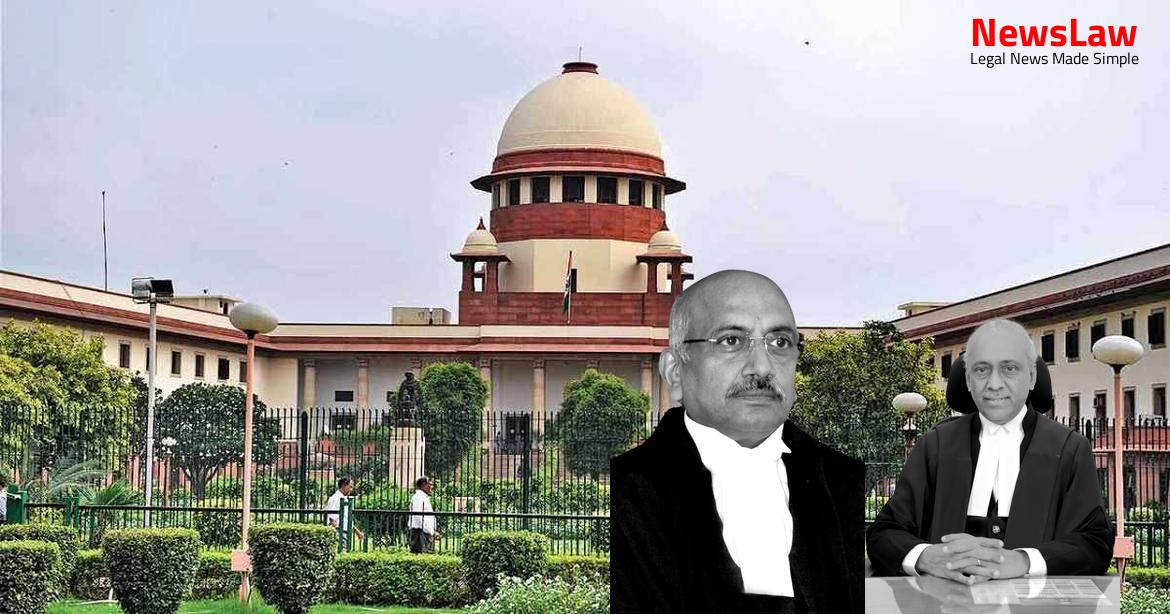Explore the nuanced legal analysis surrounding land acquisition compensation in our latest summary. The court’s in-depth examination of factors such as development charges and market value sheds light on the complexities involved in determining fair compensation rates. Stay tuned to uncover the legal intricacies at play in this case.
Facts
- The High Court modified the compensation rate to Rs.6/- per square foot with a 1/3 deduction instead of 25% deduction as per the Reference Court’s judgment.
- The acquiring body appealed the Reference Court’s decision to enhance compensation to Rs.6/- per square foot with a 25% deduction.
- The High Court set aside the Reference Court’s order and remanded the proceedings for fresh adjudication due to lack of sufficient opportunity for the acquiring body to contest.
- Both the acquiring body and the original claimant have filed appeals against the High Court’s decision to determine compensation at Rs.6/- per square foot with a 1/3rd deduction.
- A reference under Section 18 of the 1894 Act was made by the original claimant.
- The land was sought to be acquired by the Ministry of Defence for its Research and Development Organization.
- Compensation was fixed at Rs. 6/- per square foot after a deduction of 25% for development charges.
- Dispute was regarding four pieces of land bearing Survey Nos. 40, 41, 43/2, and 44 owned by the original claimant.
- The acquiring body filed Cross Objection No. 14/2021 challenging the enhanced compensation amount set by the Reference Court.
Also Read: Ruling on Circumstantial Evidence in Murder Case
Arguments
- The ASG vehemently contends that deductions towards development charges were wrongly increased by the High Court from 25% to 33%.
- It is argued that up to 40% of the land could be utilized for development works and the cost of amenities could be up to 35% of the plot value.
- ASG further argues that due to the prolonged litigation of over 28 years and the unique nature of the land acquisition for a research project, no deduction should have been granted.
- The ASG criticizes the reliance on sale instances of individual smaller plots for compensation on a large land acquisition.
- The original claimant’s counsel argues that the compensation deduction of 33% by the High Court is unreasonable and should have been higher due to the land being barren agriculture.
- The argument is backed by citing previous court decisions and principles governing land compensation.
- There is disagreement on the compensation rate based on square foot, with arguments that it is impermissible and should be higher based on specific factors of the case.
- Both parties also dispute the reasoning behind compensation rates in relation to adjacent lands and their potential for layout conversion and subsequent sales.
- The ASG emphasizes the significance of considering the purpose of acquisition in determining deductions and compensation rates.
- The ASG challenges the compensation determination based on square foot basis due to the large extent of land involved.
- Considerable undervaluation in the sale instances at Ex. 91 to 93 is pointed out.
- Undervaluation observed in the sale instances at Ex. 39, 40, 41, and 47, ranging from two to four times in the same village of Borkhedi.
- Land in the same village (survey No. 20) sold five years prior for Rs. 15/- per square foot, indicating undervaluation in the current acquisition.
- Claimants presented evidence from prospective purchasers (Ex. 59, 63, 65) suggesting land valuation in the range of Rs. 28 to Rs. 40 per square foot.
- Reliance on expert valuer’s report at Ex. 56 valuing the land at Rs. 35 per square foot.
- Expert valuer’s credentials acknowledged by the defence witness, enhancing credibility of valuation.
- Citing relevant case laws to support the reliance on expert valuer’s report and sale instances for determining land value.
Also Read: Challenging Legal Presumptions in Negotiable Instrument Cases
Analysis
- Sale instances of small plots/parcels of land are generally not comparable to large extents of land for determining compensation.
- The High Court’s deduction of 33.33% towards development charges was considered on the lower side.
- Considering the large extent of land (45 Hectares 89 R), the absence of exemplar sale deeds for large pieces of land, and the nature of the acquired agricultural land, a 40% deduction towards development charges was deemed appropriate.
- The acquired land was a barren agricultural land with potential for non-agricultural development.
- The High Court did not adequately consider relevant factors in determining the deduction towards development charges.
- Small plots/parcels of land cannot offer the same market value as a large tract of land in an open market.
- The sale instances at Ex. 91 to 93, specifically for plots out of land bearing Survey No 42, were considered comparable due to proximity to the acquired land.
- The compensation was determined based on sale instances at Ex. 91 to 93 which were non-agricultural developed plots on the highway with access to the main road.
- The Reference Court and High Court heavily relied on sale instances at Ex. 91 to 93 for determining the market price of the acquired land.
- The decision in the case of Lal Chand has been followed in subsequent cases like Maya Devi (Dead) through Lrs. V. State of Haryana and Andhra Pradesh Housing Board v. K. Manohar Reddy.
- In the case of Dyagala Devamma, the court quashed the deduction towards development charges at 25% instead of 50% as deducted by the Reference Court.
- Courts can apply reasonable guesswork to balance equities in fixing a just and fair market value under Section 23 of the Act, as recognized in previous cases like Trishala Jain v. State of Uttaranchal and Vithal Rao v. LAO.
- The deduction towards development charges varies from 10% to 86% depending on factors like the nature of the land, area under acquisition, development status, purpose of acquisition, etc.
- For large chunks of undeveloped land, appropriate deductions towards development expenses are considered just and reasonable for determining true market value.
- In cases of acquisition of large tracts of land with exemplars of small portions, suitable deductions towards development costs are required, varying between 20% to 75% of the price of developed plots based on the nature of development.
Also Read: Legal Analysis Critique in High Court’s Quashing Order
Case Title: UNION OF INDIA Vs. PREMLATA (2022 INSC 396)
Case Number: C.A. No.-000176-000177 / 2022



